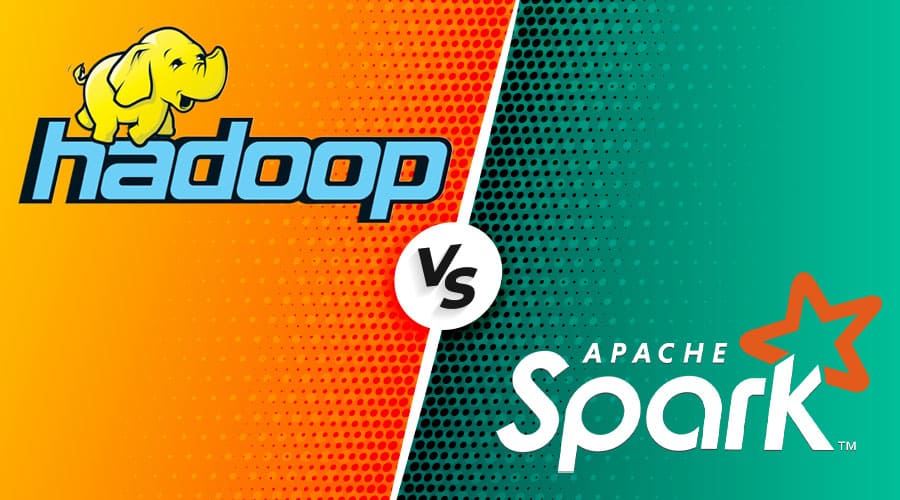Hadoop vs. Spark: Which Big Data Framework is Right for You?
 Shivanshi Singh
Shivanshi Singh
Introduction
In the world of Big Data, Hadoop and Spark are two of the most powerful and widely used frameworks. Both offer robust solutions for handling large-scale data processing, but they differ in how they approach and solve Big Data challenges. Choosing the right framework depends on the specific needs of your project, team expertise, and budget.
This article will help you understand the key differences between Hadoop and Spark, so you can make an informed decision on which framework best suits your business.
What is Hadoop?
Hadoop is an open-source framework designed for distributed storage and processing of large datasets. It follows a master-slave architecture, and its core components include:
HDFS (Hadoop Distributed File System): A storage system that allows data to be distributed across multiple nodes.
MapReduce: A programming model for processing large-scale data in parallel.
YARN (Yet Another Resource Negotiator): Manages computing resources in clusters.
Hadoop is particularly suited for batch processing and large-scale storage.
Key Features of Hadoop
Scalability: Easily scales to petabytes of data.
Fault Tolerance: Replicates data across nodes to ensure data availability.
Cost-Effectiveness: As an open-source project, Hadoop is budget-friendly, with a large community providing support.
What is Apache Spark?
Apache Spark is a unified analytics engine that focuses on real-time data processing and faster execution of tasks. Unlike Hadoop, which relies on the MapReduce model, Spark uses in-memory processing to provide quicker results, making it highly efficient for iterative computations like machine learning.
Key Features of Spark
In-Memory Computing: Data is stored in RAM rather than on disk, which speeds up processing.
Versatility: Spark excels in handling a diverse range of tasks, from batch processing and real-time data streaming to advanced applications like machine learning and graph processing, making it adaptable to various Big Data needs.
Ease of Use: Spark provides high-level APIs in Java, Scala, Python, and R, making it easier to develop and deploy applications.
Hadoop vs. Spark: A Comparison
1. Data Processing Speed
Hadoop: Relies on MapReduce, which reads and writes data from disk, making it slower for iterative tasks.
Spark: Uses in-memory processing, which makes it up to 100x faster than Hadoop for certain tasks.
2. Ease of Use
Hadoop: Developers need to write complex Java code for MapReduce jobs, which can be challenging for beginners.
Spark: Provides a more user-friendly interface with APIs in popular languages like Python and Scala, simplifying development.
3. Real-Time Data Processing
Hadoop: Primarily designed for batch processing, making it less efficient for real-time data.
Spark: Excels at real-time data processing with its structured streaming capabilities.
4. Fault Tolerance
Hadoop: Highly fault-tolerant due to data replication in HDFS.
Spark: Also provides fault tolerance but relies on lineage graphs for recovering lost data.
5. Cost Efficiency
Hadoop: Works well for storing massive amounts of data at a lower cost, ideal for projects focused on batch processing.
Spark: In-memory computation requires more RAM, making it more expensive to run, especially for larger datasets.
Use Cases for Hadoop
Data Warehousing: Hadoop’s HDFS is ideal for long-term storage of large volumes of structured and unstructured data.
Batch Processing: Suited for scenarios where data is processed in batches, such as log processing or ETL (Extract, Transform, Load) jobs.
Use Cases for Spark
Machine Learning: Spark’s MLlib library and in-memory processing make it perfect for iterative tasks such as machine learning model training.
Real-Time Analytics: Spark Streaming enables real-time data analysis, ideal for applications like fraud detection or recommendation engines.
When to Choose Hadoop?
Large-Scale Storage: If your primary goal is to store massive amounts of data, Hadoop is a great fit due to its cost-effectiveness.
Batch Processing: For projects that don’t require real-time data processing but focus on batch jobs, Hadoop will serve you well.
When to Choose Spark?
Speed is Critical: When your projects demand fast, iterative processing, Spark’s in-memory computing will offer the speed you need.
Real-Time Data Processing: If you’re dealing with continuous streams of data and require real-time analytics, Spark is the better option.
Conclusion
Both Hadoop and Spark are powerful frameworks for Big Data processing, but they serve different purposes. Hadoop excels in storage and batch processing, while Spark shines in real-time data processing and speed. The right choice depends on your project’s specific needs. For large-scale, cost-effective data storage, Hadoop is the way to go. On the other hand, if your focus is on fast, real-time analytics, Spark is your best bet.
For professionals looking to gain expertise in Big Data frameworks like Hadoop and Spark, there are several data analytics training in Delhi, Noida, Gurgaon, Pune, and other major cities located in India that provide in-depth, hands-on learning to equip you with the skills needed for success in the industry.
Consider the scale, speed requirements, and nature of your data processing tasks before choosing the framework that aligns with your business objectives.
Subscribe to my newsletter
Read articles from Shivanshi Singh directly inside your inbox. Subscribe to the newsletter, and don't miss out.
Written by

Shivanshi Singh
Shivanshi Singh
I am a Digital Marketer and Content Marketing Specialist, I enjoy technical and non-technical writing. I enjoy learning something new. My passion and urge is to gain new insights into lifestyle, Education, and technology.